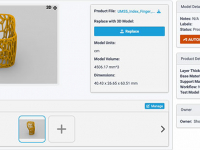
March 31, 2020
It is common knowledge that 80% of the throughput time of a CFD simulation is spent on preparation and set-up. Typical challenges of this preparation process are poor quality of the available CAD and high complexity of the geometries.
Dirty geometries containing holes and cavities and complex structures normally require a lot of manual input to result in a good quality mesh. It is a laborious process, making it difficult to create various design alternatives for iterative testing.
Many techniques exist to tackle these issues: from capping the holes and removing geometry features to wrapping the geometry, etc.
These solutions are offered by many CFD providers, including NUMECA, and they all have their advantages and drawbacks. But none of them really respond to the full specification list that certain users are looking to fulfill: a solution that works for both CAD and STL files, that does not lose any detail of the geometry in the process and that does it as fast and as automated as possible. Honda had that exact same wishlist and found the answer in the NUMECA AutoSeal technology.
One of the typical reasons that CAD cleaning in the native CAD system can take days or even weeks depending on the complexity of the geometry, is the mere fact that the objectives of the CFD engineer differ from those of the CAD designer. Think for example about details like welds, seals, nuts, bolts, etc… All these have no added value per se for a simulation, but they are of key importance for manufacturing purposes, so the CFD engineer needs to deal with them. This is where AutoSeal combined with HEXPRESS™/ Hybrid can make a big difference, and Honda was one of its early adopters.
Fill out the information below to download the resource.
Latest News







